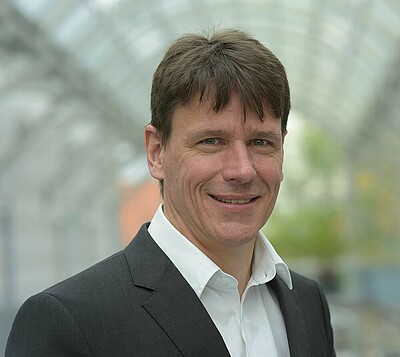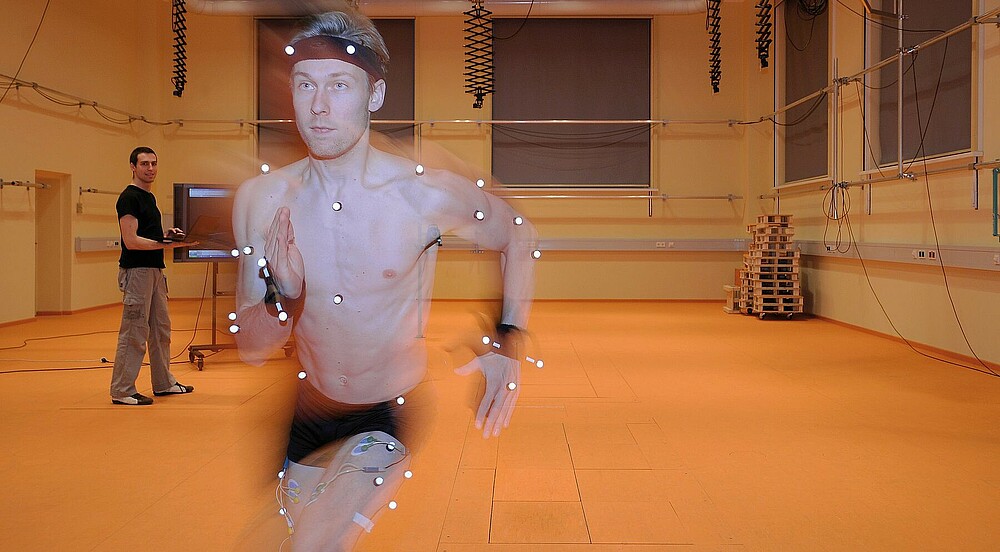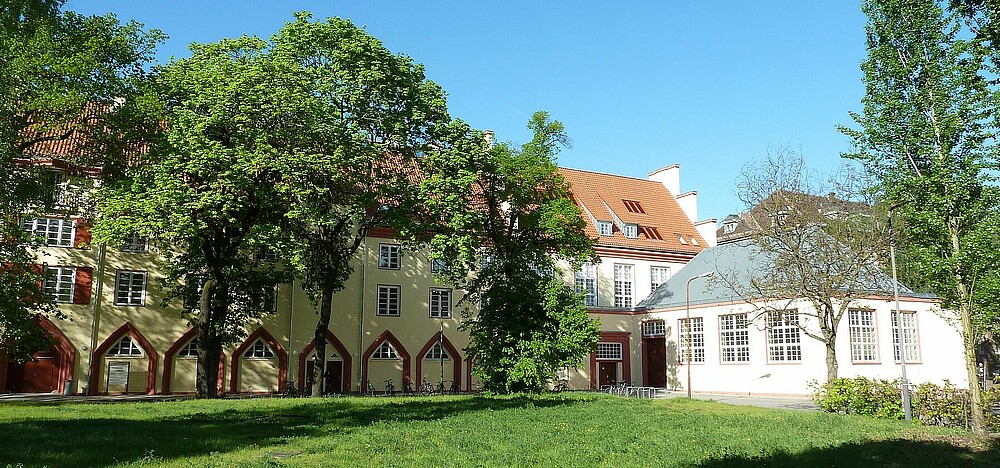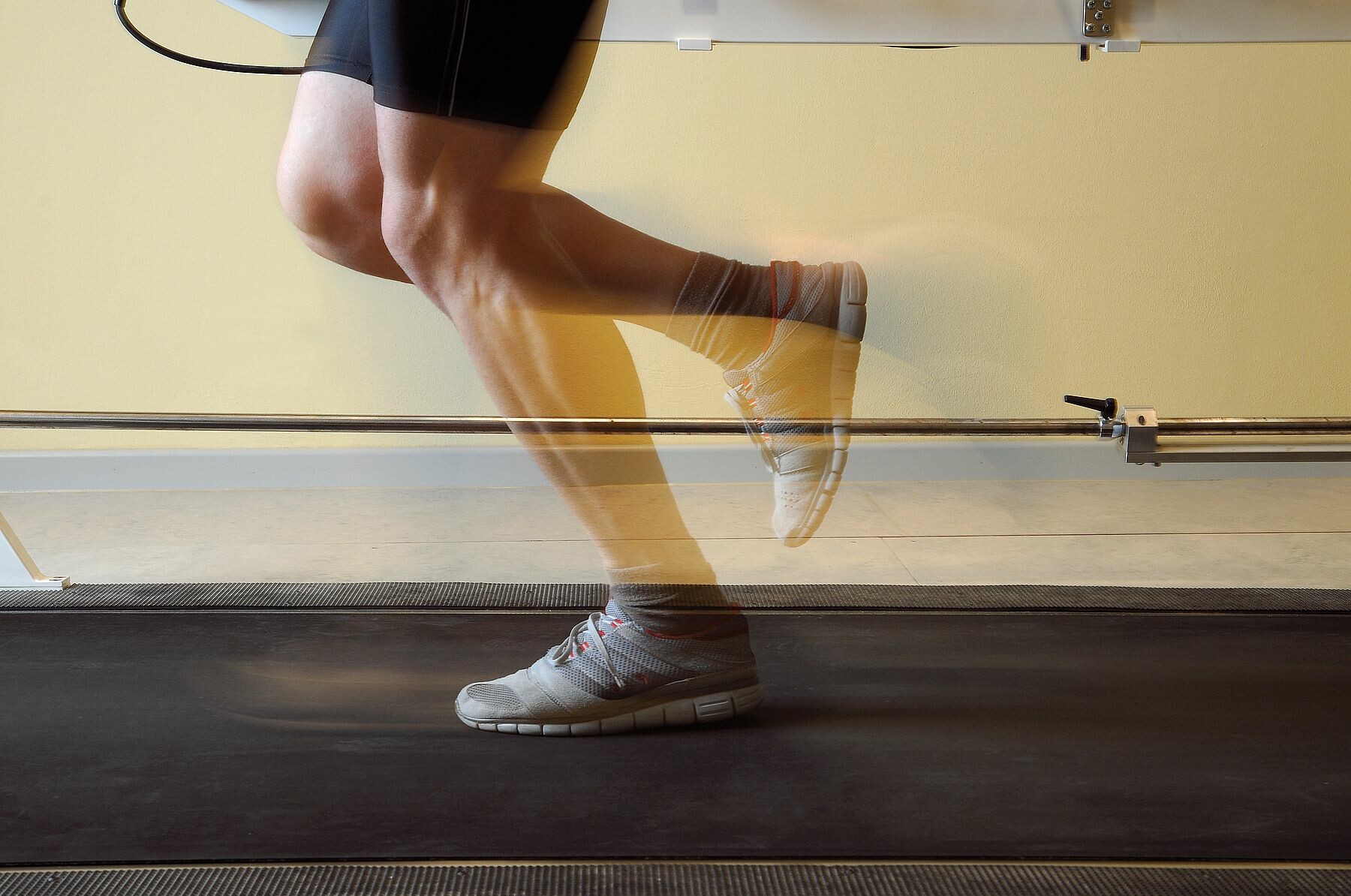One of the world's largest laboratories on movement
Julius Wolff Institute: Where science and sport interact
Looking at the stunning facade of the brick building at Philippstraße 13 in Berlin-Mitte, you’d never know that it houses one of the largest and most state-of-the-art laboratories on movement analysis in the world.
For example, in Haus 11 on Campus Nord of the Humboldt University, one finds the Julius Wolff Institute for Biomechanics and Musculoskeletal Regeneration. Prof. Dr. Georg Duda founded this institute associated with the Charité – Universitätsmedizin Berlin ten years ago. Since then, he has worked in cooperation with the HU’s Sports Sciences Department under one roof to develop a leading site of research into the interplay between medicine and sports.

Professor Georg Duda: Working in the traditon of Julius Wolff
Professor Duda completed his studies in precision engineering and biomedical engineering at Technische Universität Berlin (TU) and went on to focus on the interplay between mechanics and biology in the field of orthopedics. In 2008, he became director of the Julius Wolff Institute and professor of biomechanics and musculoskeletal regeneration.
In 1892, the German orthopedist Julius Wolff postulated what came to be known as “Wolff’s Law” regarding the transformation of bones. This law states that bones will adapt to the load under which they are placed; for example, if loading on a bone increases, it will remodel itself over time to become stronger in order to resist that form of loading. The inverse of this law is also true. In other words, bones build up and are strengthened when loaded, but will degrade when only slightly loaded or not at all.
At the two locations that make up the Julius Wolff Institute, more than 80 scientists perform basic applied research in the fields of orthopedics and trauma surgery. They explore the stresses and strains placed on the human musculoskeletal system while also examining new regeneration procedures, athletes’ performance capacities and the effectiveness of training and rehabilitation. They not only focus on the bodies of professional and amateur athletes, but also on the regeneration and rehabilitation of average patients. The kinesiological focus at Campus Charité Mitte complements the regenerative focus at the Campus Virchow-Klinikum.
The work done by Professor Duda and his team at the institute unites several different approaches, including methods of prevention, new insights into degeneration and athletes’ aspirations to achieve ever new records. As Duda notes, the team focuses on sports performance as well as the effectiveness of training, regeneration and rehabilitation: “At our institute, we are able to analyze, evaluate and optimize procedures that were developed under laboratory conditions – including procedures designed for the rehabilitation of top athletes, performance diagnostics and the analysis of athletes’ motor skills – only under real-life conditions.”

Cooperation with athletes
In order to gain a more comprehensive understanding of physical measures’ influence on movement and the loading of joints, the team at the Julius Wolff Institute is using systems designed to measure movement and external forces through medical imaging in combined form. This versatile approach is then used to establish preventive measures. As Professor Duda explains, “This is the way we work, for example, in the field of injury prevention and competitive sports, but also with regard to the early diagnosis of degenerative diseases like osteoarthritis.” For example, the team at the institute is currently supervising the German national volleyball team, looking especially at how high levels of stress during training affects the structure of cartilage. Indeed, volleyball players are at an especially high risk for joint injuries. The goal of the analysis is to identify players with more unstable joints early in order to reduce the risk of injury.
The team closely and continuously monitors the cartilage of athletes who are deemed to be susceptible. At the same time, they provide the athletes with training recommendations designed to maximize joint stability and thus minimize the risk of osteoarthritis and injury. The junior soccer players on Berlin’s 1. FC Union team are also being treated by the experts at the Julius Wolff Institute. Among other things, the researchers measure joint stability in players’ knees; in turn, these measurements allow them to make recommendations for holistic training concepts. “We monitor our subjects to see to what extent we can improve joint stability by means of special exercises so that we can reduce the risk of injury and arthrosis,” explains the institute director.
RUNSCAN: Biomechanical running analysis
In the past two years, researchers at the Julius Wolff Institute developed RunScan, a biomechanical walking and running analysis system that allows them to determine the individual running styles and patterns of athletes and orthopedic patients. “For example, we can use RunScan to analyze the running pattern of someone who is eager to run a marathon, but who would like to avoid provoking any chronic overloading of their joints due to stress or their particular running style,” says Professor Duda. RunScan can also determine how quickly athletes will be able to return to their sport after suffering an injury.
The first step involves recording the athlete’s comprehensive medical history. After that, he or she runs on the instrumented treadmill, where all major stress parameters are measured to determine the load on the feet and the distribution of body weight. Every step is monitored and all force parameters are recorded, with the athlete’s movements captured by two high-speed cameras and a motion analysis system. As soon as the results have been evaluated, the most important task is to provide the athlete with a custom-made training recommendation. A full examination lasts up to one hour and costs between €150 and €170.

The interplay of medicine and sport
The Julius Wolff Institute cooperates with a number of partners, including the Olympiastützpunkt Berlin, 1. FC Union Berlin, SV Babelsberg and various ALBA baskeball players. For a while now, the team has also been working together with dancers at the Staatsballett Berlin, where the injury rate can quickly reach 80% per season. The team’s goal here is to identify dancers who might have instabilities in their knees and hips or any problems with their ankles and backs; after that, their job is to offer them support and advice. The research institute is closely connected with the Center for Musculoskeletal Surgery at Charité Hospital and the HU’s Department of Training and Movement Sciences. The Julius Wolff Institute is looking forward to creating an even closer exchange among athletes, scientists and physicians.
“Sports are a key theme in Berlin, and so, too, is science. I’m hoping these two fields work more closely together in the future, as we would benefit tremendously from more interfaces between the two worlds.” - Prof. Georg Duda
Stay ahead of the game
Learn more about the sports metropolis Berlin, discover our BrainCity Berlin campaign or read on about Berlin as a Science Location.
Text: Anna Knüpfing
The article was originally published in Berlin to go 02/2018
Images: Julius Wolff Institute






